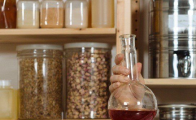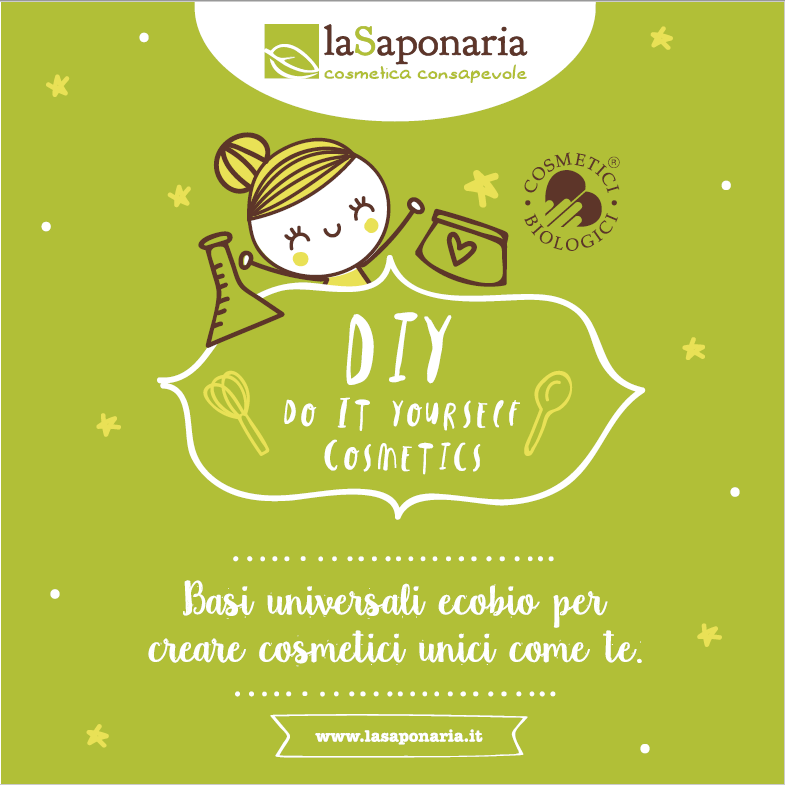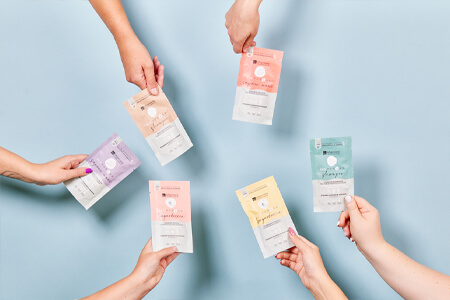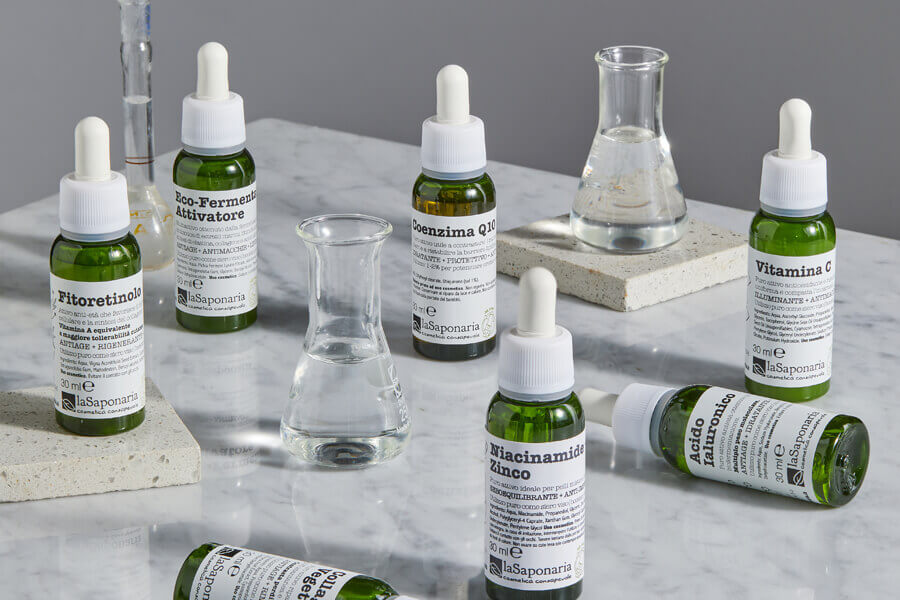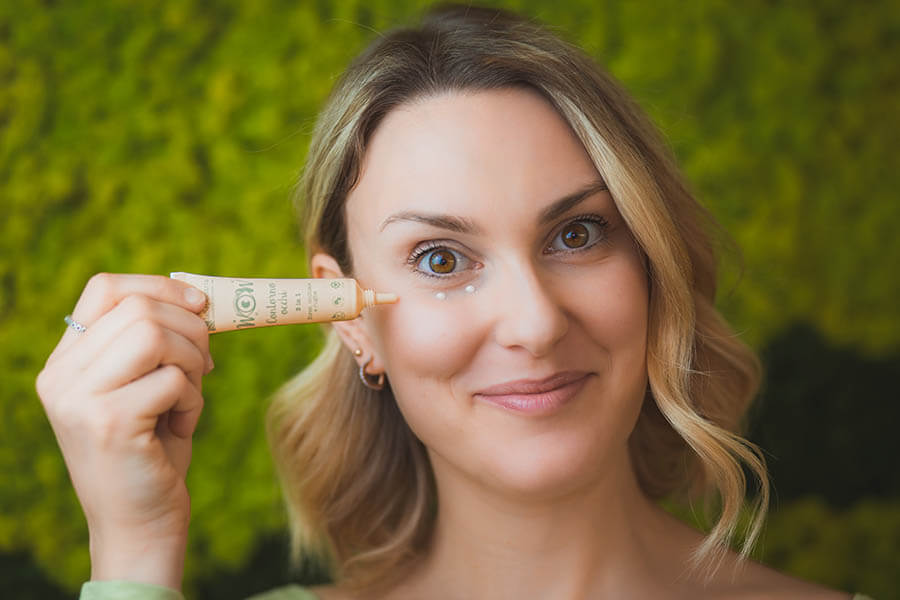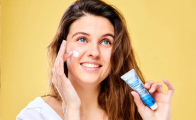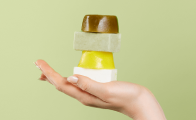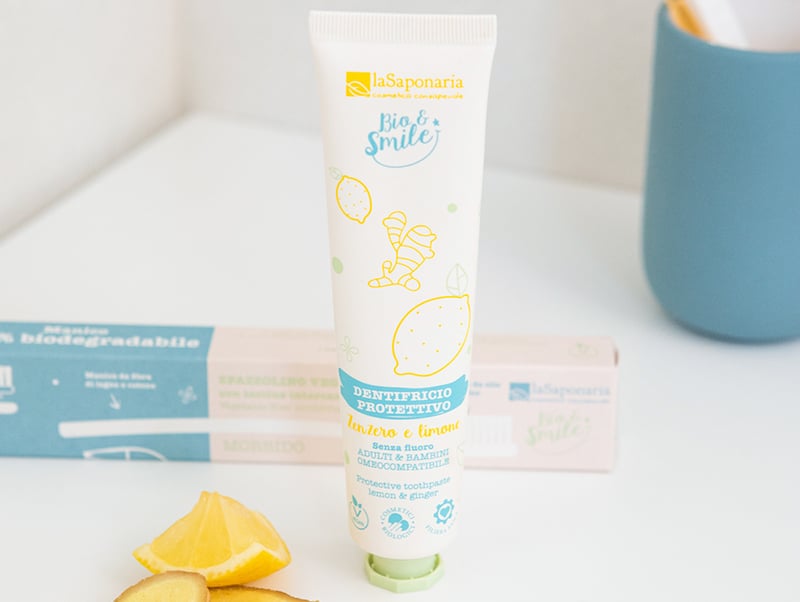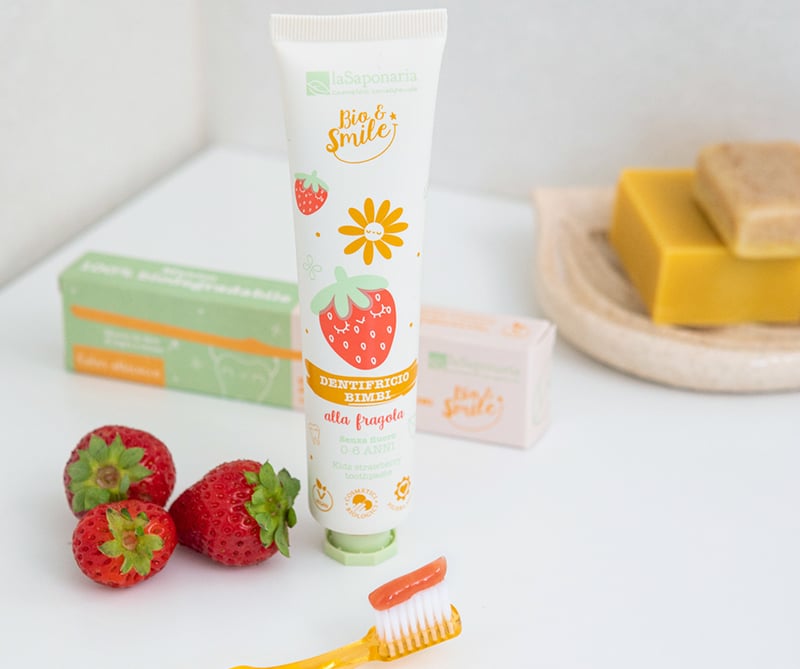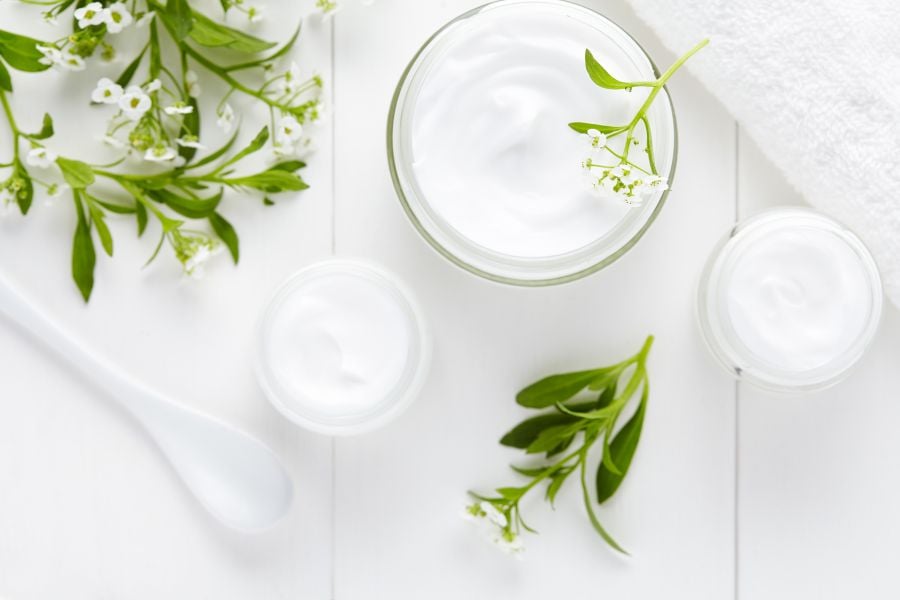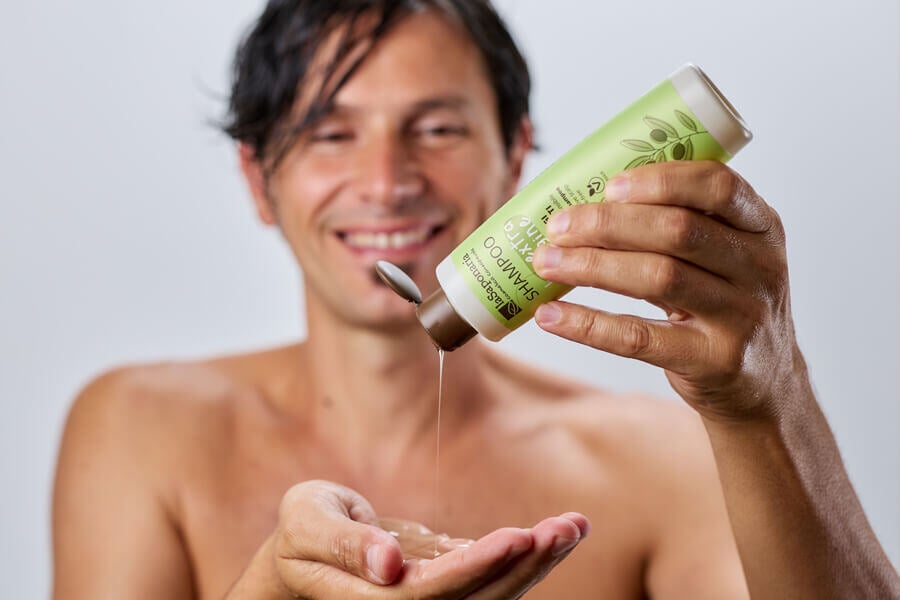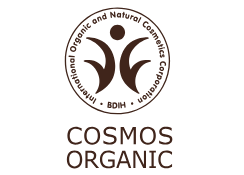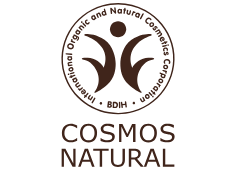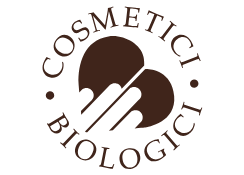The insights of La Saponaria
Toothpaste without fluoride: because it is a good idea not only for children
The smile is our first business card and we all want it to be healthy and our oral hygiene plays a crucial role in this. During our daily tooth cleaning routine, one of the most common ingredients we encounter in conventional toothpastes is fluoride. But should you choose toothpaste without fluoride? Let’s see why and also what are the natural alternatives.
Fluoride has historically been considered an essential ingredient for the prevention of dental caries. It is known for its role in remineralizing dental enamel and protecting against damage caused by acids produced by bacteria in the mouth. However, there are some growing concerns regarding the excessive or prolonged use of this ingredient that we often find in conventional toothpastes. This is why more and more brands offer fluoride-free toothpaste.
What drives people to look for fluoride-free toothpaste is that studies have shown that excessive exposure to fluoride can have adverse health effects. In particular, excessive accumulation of fluoride can lead to a condition known as dental fluorosis, which is manifested by stains or discoloration of tooth enamel. This should be taken into account especially in children who may be more susceptible to the adverse effects of fluoride during tooth development. In the case of children, the presence of fluoride has been carefully regulated and children’s toothpastes may contain up to a certain amount of this ingredient.
Fluoride-free toothpastes offer a natural, chemical-free alternative for those looking for a more gentle, natural option for their oral hygiene. But will they protect against the damage caused by dental caries? Yes! There are ingredients that can be alternatives to fluoride in tooth protection, such as hydroxyapatite or activated carbon. And then toothpaste is just one of the aspects of proper dental hygiene: most of all, the correct brushing technique and the constant use of dental floss and then also rinse solutions such as mouthwashes contribute to maintaining a healthy mouth.
What is fluoride? And why choose toothpaste without fluoride?
Fluoride is a chemical element and occurs in nature mainly in the form of fluorides, chemical compounds containing fluorine ions. It is widely used in various industries, including the chemical industry, glass and ceramic production, and dentistry. One of the best known uses of fluoride is in the prevention of dental caries. Fluoride works through a process called fluoridation, in which fluoride is absorbed by the enamel of the teeth, strengthening their structure and making them more resistant to the acids produced by the bacteria that cause caries. This remineralization process can help prevent the formation of dental caries.
However, it is important to maintain an appropriate balance in fluoride intake, as excessive exposure can lead to several issues. Here are some of the potential damage associated with fluoride:
-
Dental fluorosis: Excessive intake of fluoride during tooth development can cause dental fluorosis. Fluorosis is manifested by white or brown stains or discolorations on the surface of tooth enamels. This may be a result of excessive use of toothpaste containing fluoride, excessive intake of fluoride supplements or excessive exposure to fluoride sources in drinking water. The severity of dental fluorosis can vary, and in extreme cases, it can cause a permanent alteration of the appearance of teeth.
-
Fluoride poisoning: Ingestion of high amounts of fluoride can cause fluoride poisoning or systemic fluorosis. This condition can occur mainly in childhood, when children may accidentally ingest toothpaste or supplements containing excessive amounts of fluoride. Symptoms of fluoride poisoning may include nausea, vomiting, abdominal pain, and in severe cases, kidney and nervous system damage may occur.
-
Fluoride sensitivity: Some people may develop sensitivity to fluoride and experience gum irritation, mouth ulcers or other adverse reactions after using fluoride-containing products. In such cases, it is advisable to consult a dentist to determine the cause of the symptoms and find suitable alternatives.
It is important to note that these potential damages are usually associated with misuse or excessive exposure to fluoride. By following the recommended usage guidelines of dental professionals and maintaining a balance in fluoride intake from all sources, you can reduce the risk of such problems.
Fluoride-free toothpaste: the alternatives to fluoride
In addition to fluoride, there are several alternatives available in toothpastes for those who want to avoid using this ingredient. Of course, you should always consult with your doctor or dentist to find out which option is right for you. The most common ones are:
- Xylitol: Xylitol is a natural sweetener that can be used as an alternative to fluoride in toothpaste. It has been shown to help prevent the formation of bacterial plaque and the adhesion of bacteria to the teeth, thus reducing the risk of caries.
- Plant extracts: some natural toothpastes use plant extracts known for their antibacterial and anti-inflammatory properties. For example, aloe vera, tea tree oil, and peppermint oil may be present in fluoride-free formulations to contribute to oral health.
- Baking soda: Baking soda is another common ingredient in fluoride-free toothpaste. It has cleansing and natural whitening properties that can help remove surface stains and bacterial plaque.
- Calcium and phosphate: Some toothpastes contain a combination of calcium and phosphate, which are essential minerals for healthy teeth. These ingredients can help strengthen enamel and promote remineralization.
- Silica hydrates: Hydrated silica is a natural abrasive that can be used as an alternative to fluoride in toothpaste. Contributes to the cleaning and elimination of superficial stains without damaging the tooth enamel.
- Hydroxyapatite: Hydroxyapatite is a mineral compound naturally present in teeth and dental tissues. It can help strengthen enamel, repair microscopic surface lesions and promote remineralization.
Hydroxyapatite: an interesting alternative for fluoride-free toothpastes
As we have seen, hydroxyapatite is an alternative to fluoride that is used in toothpaste. It is a mineral compound that forms an important part of the enamel of teeth and dental tissues. It has been shown to have fluoride-like properties in preventing caries and restoring oral health.
One of the main advantages of hydroxyapatite is that it is a natural substance present in our body, making it a choice closer to the biological composition of our teeth than fluoride. Hydroxyapatite can help strengthen tooth enamel, repair microscopic surface lesions, and promote remineralization.
Studies have shown that its super powers are:
- reduce the sensitivity of the teeth
- prevent the formation of bacterial plaque
- help maintain a healthy mouth
- is generally considered safe and does not present the same risks of overdose or fluorosis associated with the excessive use of fluorine.
We can find it in Protective Toothpaste Zenzero&Limone, a delicate and homeocompatible toothpaste suitable for the whole family. It contains a portentous mix of essential oils, in particular those of organic Ginger and Lemon, ideal for the health of the gums and the oral cavity and has a protective and soothing action to 360, removing the plaque gently. The special micro crystals of hydroxyapatite contained play a remineralizing action and help to strengthen and protect the enamel.
Activated carbon: an important ingredient in oral hygiene
Activated carbon is an ingredient that is often used in toothpaste as a whitening agent and absorbent of surface stains on teeth. It is known for its ability to absorb impurities and stains on the surface of teeth, helping to improve the appearance of the smile. It has no remineralizing or protective properties against caries but is great to use as a natural whitening agent.
We can find this ingredient in Toothpaste WonderWhite Menta&Carbone, a toothpaste without fluoride that contains aloe vera and three types of mint to give an incredible feeling of freshness, particles of silica and activated carbon, to help gently remove stains and make the enamel shine without damaging it, making your teeth naturally white and shiny!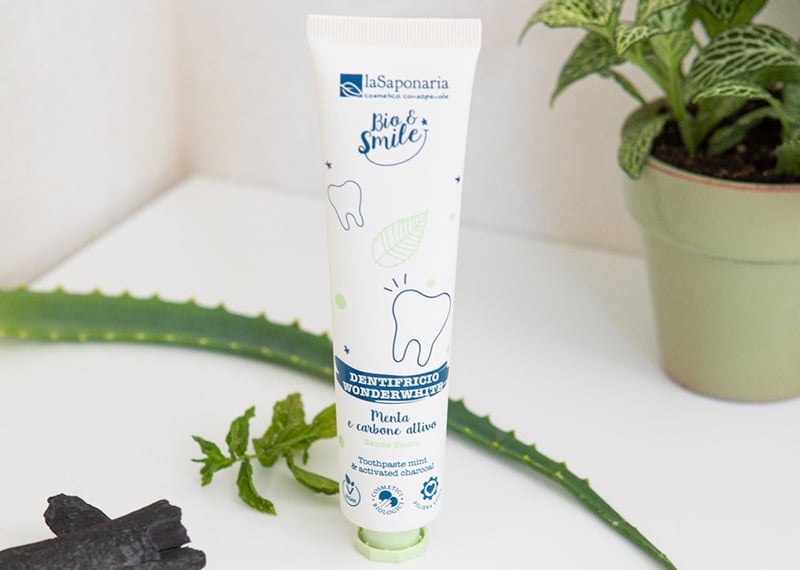
Fluoride in children’s toothpastes
Fluoride is not banned in children’s toothpaste but is regulated. Toothpastes containing 0.1% to 0.15% fluoride must be labelled «Contraindicated in children».
In particular, the American Dental Association (ADA) recommends the use of toothpastes containing fluoride for children older than 6 years. This is because at this age children usually develop the ability to spit out excess toothpaste after brushing, thereby reducing the risk of excessive ingestion of fluoride. Many parents who have to choose the best toothpaste for their children choose then to avoid this ingredient altogether by opting for valid alternatives such as the Soothing Toothpaste Children Strawberry, fluoride free and formulated for children from 0 to 6 years based on calendula, aloe vera and strawberry flavor to soothe, refresh and protect the oral cavity of children, helping to prevent the onset of caries and tartar.
In conclusion, the use of a toothpaste without fluoride can be a choice to be made not only for children, but also for adults who wish to avoid the use of this ingredient in their oral hygiene products. Choosing a toothpaste without fluoride can offer a more natural and safe solution for tooth care.

Written by Simona
She is La Saponaria’s digital writer: always juggling a newsletter to send and a blog article to publish, she lovingly takes care of our social media channels and our e-commerce.



